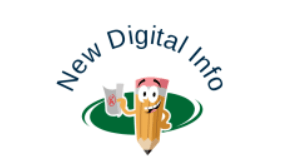Surely you have heard more than once that it is essential to focus on creating quality content, relevant content to attract the attention of the user … and Google. But what do we mean when we talk about creating quality content for your website ?
Creation of digital content: what is it and how to take advantage of it in your strategy?
In online marketing we understand the creation of content such as the preparation of texts, images, videos, etc., that provide information to the user, with the aim of attracting traffic to a web page.
Making our content creation effective is not easy. A good layout is not enough or an article is well written, without errors. A digital content should be interesting, visual, attractive and offer value to the user. This is essential in any strategy for the SEO positioning of the web page that we want to position in the search engines.
Also, do not forget that we are increasingly saturated with information, with a user facing a panorama of infoxication: that is why our content must stand out from the one generated by the competition. That it is considered truly useful content, capable of solving a problem, seeking a solution or satisfying a desire. We are going to see some tips that help to create quality content for your website.
What types of content can we create for a website?
At the moment, when we talk about creating digital content , we tend to focus on blog articles. Certainly blogs are still very important to attract users to our website if the posts we publish are of interest.
But there is more. There are other formats that can help us to get traffic, to catch the attention of the consumer, in addition to the merely written one. And knowing the existence of these various formats and checking if they adapt to your SEO positioning strategy is in your hand.
We have before us an increasingly technologically prepared user with very varied tastes. There are those who love to read. There are those who spend a lot of time commuting in public transport with their helmets on. There are those who spend several hours a day getting digital content.
We can try to focus on all of them or focus on just one type. We can try the different formats until we know which is the preferred one of our target. Or, broaden that target audience precisely because we’ve included a new format that has captured attention.
Ebooks
Ebooks have become the star strategy of many marketing campaigns and including them whenever it suits the philosophy of your company is a wise move.
Giving an ebook to a user who has just landed on our page is a way to win him over through more content, which the user interprets as valuable as it expands information or provides solutions that he was demanding. This “conquest” translates into a lead, a record: the user becomes part of our database. And having a good database is essential to generate sales, either because in that ebook we have included a call to action (enrollment in an online course, for example) or because we can include it in our list of subscribers to our newsletter (in which we can try again to persuade you to generate a conversion).
Articles
We mentioned it before. There are users who prefer to continue reading, who are attracted by a well-structured, clear, entertaining post that adds value. Blog articles are still a great source of web traffic and should not be missed because they also have a number of advantages, highlighting their versatility:
- You can focus on both B2B and B2C companies,
- Suitable for all types of businesses.
- They improve the SEO positioning of a web page by increasing the content of value with each new article (as long as it is of quality) and we will get a greater number of indexed pages.
- You can be timeless, current or seasonal.
Videos
In front of the traditional user, we find the one who loves to consume digital content in video format. And it is an option not to be missed, either by using social networks ( YouTube , Vimeo, TikTok, Instagram, Facebook, for which the required duration of each of them will have to be taken into account) or by embedding the video within an article . The videomarketing is ideal for a user who requires immediacy, video solutions that add value and a pleasant and comfortable.
Images and infographics
The saying is worth a picture more than a thousand words is true, especially for a certain number of users. But also to illustrate a product (in the case of an image) or to explain any type of content (processes, developments, etc.); in the latter case, infographics are the most indicated.
When we want to use digital content of this type, we must take into account some very important aspects:
- Images: always include quality images so that they do not appear pixelated if the user enlarges them. The details must be appreciated well and ensure that the colors correspond to reality, etc. So that they don’t “weigh” too much and that this slows down your web page, there are various lazy load plugins for lazy loading.
- Infographics: well structured, with attractive colors and that perfectly explain what you are telling.
Be creative
Don’t use the same images as the competition. Search free image banks (Pixabay, Pexels, Freepik, for example) and paid (Shutterstock, Adobe Stock, Gettyimages, etc.) and see if they have been overused. If you have no choice but to use a popular image, get creative and give it a spin. Change the orientation, format, add some resource (gifs, typography, overlapping images) or call to action, etc.
The ideal, obviously, is that you use your own bank of images and videos so that your content is unique and exclusive . This way you will make it impressive, different, innovative. But if it is not possible, use the resources indicated above.
Check list
Another great digital content for that express user who loves to consume content quickly. A good checklist appears, summarizes and reports in a clear and concise way. With a quick glance, the user gets the solution to their doubts or problems. You can use checklist as digital content for infinite purposes: show main characteristics of a product, summarize an article, etc.
Content creation process, how to improve it?
All the formats previously described allow the creation of digital content that reports higher traffic to your website. Therefore, thanks to this increase in traffic, the chances that users will make a conversion will increase, be it the sale of a product or service, a subscription or an affiliation.
No method for creating content is foolproof. Neither are the formats that we have indicated above. But we do have some tips with which you can guide yourself in the content creation process or improve the existing one.
1.-Plan
Before creating content for your website, you have to plan. What type of content do you want to generate? What purpose are you pursuing with it? Plan with a focus on both users and goals, and why not? see what kind of digital content your competition is producing.
Define your goal as much as possible.
You may even have more than one. In that case, for each objective, you must specify what you want to achieve and create content accordingly. Possible goals to focus on:
- Generate more sales from users who already know our website.
- Get new clients.
- Improve positioning.
- Get subscriptions.
- Improve the corporate image of the company.
- Increase the number of affiliates.
Set your target and analyze it
Define your target audience. Set the target you want to reach and analyze it. Investigate what they are looking for, what brands they are talking about, how they interact with them, what they require, what desires you need to satisfy.
When you know how to answer all these questions, plan the content adapted to that target. When looking for an answer, a service or a product, you serve it on a tray, standing out from the rest.
When we talk about creating content for the web , the premise that quality is better than quantity is totally true. And that that quality is what your target is looking for, too. But it is also true that you must create enough content capable of improving the SEO positioning of your website, so hardly a single post. video or podcast per month will be enough to climb positions in search results.
You have to find the perfect relationship between the number of publications and their quality: only then will you get a loyal and recurring consumer, who visits your website in search of solutions, content or products.
Analyze your competition
Everything is invented, but it can be improved. What does your competition do? How do you target the user? What content do you share and how do you share it? With what type of publications do you get better results?
SEO tools like MOZ, SEMrush, Ahrefs allow you to monitor the competition, use them!
2.-Produce
Now is the time to get fully into production based on the planning above and without forgetting a few points:
- What type or types of web content are you going to produce.
- Create a publication calendar according to the objectives you want to achieve.
- Define the person in charge of that digital content creation.
- Do not focus only on the products or services you offer: provide solutions to the user.
Create content that “reaches” the user
Emotional marketing works. Put it on your side. Include it in your content creation strategy. We give you some ideas that work:
- Content that moves.
- Content that causes joy or at least makes the user smile.
- Content that bets because dreams can come true.
- Inspirational content.
- Content that surprises in a positive way.
- Testimonial content, as long as it is truthful (or seems to be the most).
Go further
Create personalized content for your target audience. You can even go further: what if you offer the user the possibility of delving into a certain topic? For example: what if you offer a mentorship at the end of the post? A personal shopper session for a certain product line?
If the reader / user has reached the end of your content, award them a prize to retain them.
Don’t neglect the titles
They are the cover letter for your article, video or podcast. Hence the importance of spending time preparing the titles. That they respond to the search intention of the users. Get caught. That they attract attention. And, of course, that they correspond to the content that they carry implicitly.
There is nothing worse than defrauding a user (something that search engines will take into account, so be careful) who, when clicking on your link, finds content that contributes little or has nothing to do with what they were looking for.
Titles that work very well are those that solve questions: The how …? when…? why…? what..? they are quite effective.
Create content that is easy to consume
You have before you a user with little time; their way of life requires immediacy. So if you’ve chosen your website to consume that relevant content, make it easy for them. Uses:
- Videos with links to written posts.
- Articles with internal and external links.
- Infographics that can be perfectly read on all digital devices.
- Ditto with the typeface you use and the predominant colors on the web.
- Podcast without background noise.
- Images with good resolution.
- Includes lists.
- Shorten paragraphs to make reading more fluent.
- Includes statistics.
Empathize with your user. Offer the content that you would like to consume. Put yourself in their shoes. Or on your screen.
Share real data and statistics
You can include for example the real number of your subscribers. Or the data about the best-selling product. Or the statistics of the students registered in the different courses they offer.
SEO
Dedicate yourself to creating user-focused content , but without ever neglecting SEO. Here are some tips for creating content that meets these two goals:
- Natural writing: you write for a person, do not force the content thinking of search robots.
- Include keywords in titles (H1) and related keywords and long tails in subtitles (H2, H3, H4).
- Don’t plagiarize, duplicate content tools like Copyscape, CopyLeaks or Screaming Frog can help you. You have more detailed information in this article ).
- Beware of external links that can take away the authority of your page.
May you never lack inspiration
You have a great challenge before you. The creation of quality content for your website that generates traffic and conversions. And to that quality you have to add continuity and periodicity: you have to create new, fresh content, constantly. If sometimes the inspiration no matter how hard you try does not come, stay calm, breathe and disconnect for a few moments. And if it still doesn’t arrive, use one of these tools:
- BuzzSumo: shows you the most popular web pages and blogs according to the market niche you indicate. You will be able to know the topics that are generating the most interactions and the type of publications that are working the most on Facebook.
- Ubersuggest: enter a keyword and this tool will tell you all about it. Related keywords, the best positioned web pages with respect to that keyword, published articles that refer to it, etc.
- Google Trends: analyzes the relevance of a keyword and offers market trends.
3.-Distribute
Once you have finished with the production of the digital content that you are going to implement as a strategy to capture the attention of the user and generate more traffic to your website, you must define how and where you are going to distribute it so that it reaches the maximum number of people.
Share and get your content shared
Social networks play in your favor. Share the content you have created on them. It includes calls to action (CTA) that encourage users to share it in their own feeds. Investigate which social network is the most suitable for them to better consume that content that you have created, in which you can get the most interactions.
You can use Bitly as a url shortener or Buffer as an automation tool. Of course, remember that you are in a dynamic digital environment and you must be prepared to respond appropriately to situations of change, immediate demands for products or services, etc.
4.-Analyze
It is essential to check how your digital content creation strategy is working . You have to know how to periodically answer these questions:
- What posts have the most visits?
- Which videos have the most views?
- Which podcasts have gotten the most listens?
- What format did you like the most?
- What subject has obtained the best results?
- Has your content been shared? How often?
- What social network responds best to your publications?
- What type of content has gotten the most leads and conversions?
Analyze and act accordingly. The content you created may be great, but you didn’t share it on the right channel or created in the most relevant format. If this is the case, change it. Use the trial and error formula and re-analyze.
4.-Repeat
Content creation is a dynamic process from which we always learn. Each content created, published and shared gives us very interesting data about your target. Collect all this data and take it into account for the next batch of content so that it is more and more effective and achieves better results.
Recycle your own content
Did you create content that has been widely accepted? Did Google rank it because it considered it relevant? Check that it is updated and if not, renew it. Recycle that post (video, infographic) that once attracted so much traffic to your website with fresh and current information. The user will like it, Google will love it. You will improve the SEO positioning of your page and the possibilities of increasing the conversion rate .
Creation of quality content for the web: the great challenge
As we can see, the creation of content for the web without previously determining the objectives to be achieved does not make sense. Publish and publish without taking into account the target either. Do it without trying to help SEO positioning. Ditto.
You have to innovate, be creative. You have to attract users and search engines, you have to build loyalty. You have to share on social networks choosing when, how and where. And the process does not end here: you have to analyze, check and make the necessary changes to generate traffic and visits.
Set yourself the goal of creating quality content for your website : the results will come, for sure.










